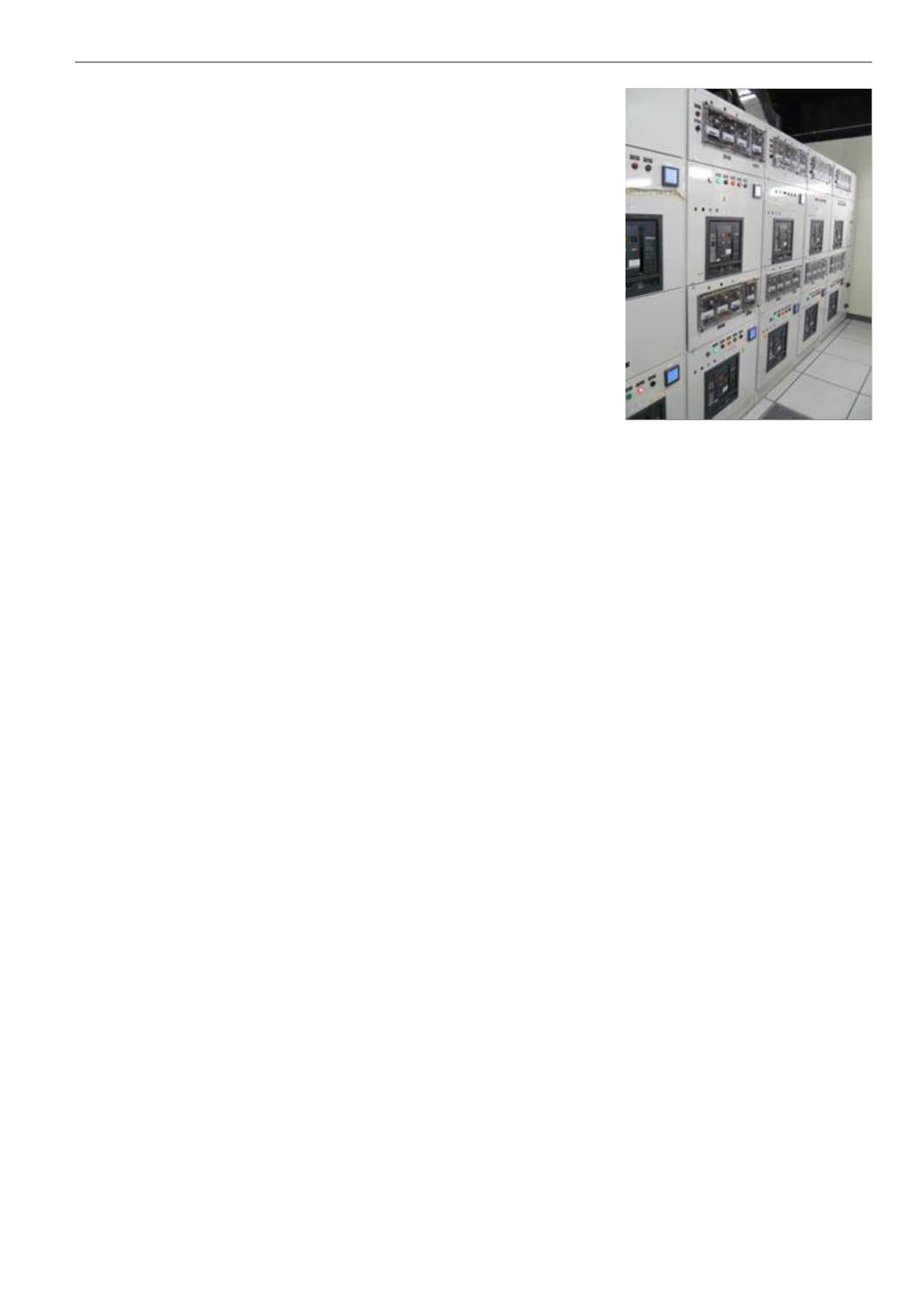
5
Energy efficient building systems for shopping malls and shop spaces
5.5
Lifts and escalators
5.4.5 Power distribution system
The design of the power distribution system should minimise direct losses, such
as copper loss, losses due to phase current imbalance and harmonics, and
indirect losses due to temperature rise which will induce an extra heating load to
the air-conditioning system.
The location of distribution transformers and the main LV switchboards should
preferably be sited at their load centres to reduce long cable runs and copper
loss. The electrical circuits should also be sized to minimise copper loss.
correction equipment should be provided so that the electrical
system can achieve a
of 0.85 or higher. The single-phase load in
a three-phase system should be evenly and reasonably distributed among the
phases. A
higher than 0.85 (e.g. 0.9) should be considered in order
to improve the power station efficiency.
The requirements for energy efficiency in power distribution; efficient utilisation of
power, energy efficiency of power quality, metering and monitoring facilities, and
the maximum
of current for any circuits must comply
with the BEC.
5.4.6 Metering for energy audit
A permanent power meter is an essential item of equipment to perform an
for retail areas in the future.
Through the
, the demand pattern can be identified and an energy management scheme can be
implemented. The provision of meters should follow the BEC requirements.
5.4.7 Professional help
It is important to engage professionals for detailed consultation on the implementation of electrical and lighting systems in
shopping malls and shops. The following is a list of references for obtaining professional help:
• Registered professional engineers (RPE) in the building services discipline – Appendix A (4)
• Registered electrical contractors – Appendix B (4)
5.5
Lifts and escalators
Lift and escalator services are generally designed to suit the vertical transportation needs of the building. The general
approach for achieving energy efficiency in the vertical transportation system is to ensure an effective utilisation of
the system and at the same time minimise any unnecessary wastage and energy consumption while meeting the
transportation needs.
5.5.1 Efficient escalators
Unlike office blocks and other high-rise buildings, the vertical transportation system for shopping malls should rely mainly
on escalators, which are capable of handling heavy traffic demand.
As escalators run continuously, regardless of passenger demand, they consume a fixed amount of energy even though
they are not being used by passengers. Therefore, energy can be saved if the speed of the motor drive can be adjusted
according to the traffic demand. The use of a variable speed motor drive system and infra sensor can adjust the speed of
an escalator during a period of low demand.
5.5.2 Professional help
It is important to engage professionals for detailed consultation on the implementation of lifts and escalators at shopping
malls and shops. The following is a list of references for obtaining professional help:
• Authorised persons (AP) & registered structural engineers (RSE) – Appendix A (2)
• Registered lift and escalator contractors – Appendix B (9)
Figure 113 Power distribution system
5.4
Electricity and lighting
Hong Kong Green Building Council 137


